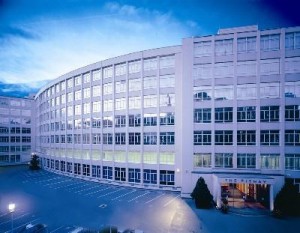Bristol city centre’s office market is undergoing its biggest transformation for decades with an unprecedented three quarters of a million sq ft of space likely to be converted to apartments this year.
Landmarks such as the 106,000 sq ft Lewin’s Place, and the 180,000 sq ft Pithay – the city centre’s largest office block – are being converted as developers and investors scramble for suitable buildings for re-use.
The market is driven by a huge increase in city centre living among students but also owner occupiers and a recovering buy-to-let market.
But the biggest trigger has been Permitted Development Rights (PDR) introduced by the Government in May 2013 and which allow conversion of B1 office space into residential without the need for planning permission. 
In the five years prior to PDRs, the average annual amount of office space taken off the market was 46,434 sq ft. Last year it soared to 315,292 sq ft and property agents are estimated it will climb even further this year to well above double that figure. PDRs will end in 2016.
Pictured: The Pithay, Bristol city centre's largest office building, is being converted to apartments
According to the Bristol office of international property agents JLL, Bristol is behind only Manchester and Birmingham in terms of a rapid rise in city-centre population, with a 30% increase in the last 10 years.
Bristol office agency director at agents Lambert Smith Hampton, Peter Musgrove, said PDRs had not only a good thing for the residential market and investment into the city, but also massively important for the office market.
“Bristol, like most major cities in the UK, has a shortage of housing. However, Bristol also has a shortage of student accommodation and therefore demand for a change of use continues to remain high.
“Bristol also has an over-supply of secondary office stock due to changes and location of the traditional office stock. This is mainly due to the Temple Quay development in the last 15 years and the subsequent developments along Victoria Street as well as the Broadmead and Cabot Circus developments.
“These have led to a movement away from the traditional centre and Lewin’s Mead to Queen Square and Park Street/Harbourside, leaving a lot of redundant buildings in the previous heartland. PDR have given developers the opportunity to make use of these buildings and convert them.”
As well as larger office blocks, LSH also sold 40,000 sq ft at 41 Corn Street and 37/39 Corn Street last year for conversion to residential use.
JLL said much of the growing city centre population will be made up of students and young professionals. This shift represents a renaissance for Bristol city centre with a significant rise in services and outlets that serve this community, such as bars, restaurants and convenience stores.
Application figures for 2012/2013 show that the University of Bristol saw the second highest rise in its student intake of all English universities, increasing its intake of new students by 28%, or 1,029 students, compared with 2011. Many of these students will be looking to the city centre for accommodation.
JLL estimates that the new students moving into Bristol will consume an additional 1.5 million cups of coffee, 3m pints of beer and 750,000 take-away meals each year and this presents a huge opportunity for businesses in the hospitality industry looking to meet that demand.
Head of JLL’s Bristol office Jeremy Richards said: “This urban shift is the great theme of our age, and Bristol will not remain untouched by this in the coming years”.
The office market has suffered in the last few years from an over-supply. The Grade A market has held up and remains steady because there has been a lack of new development and people have taken the opportunity to upgrade their premises. However, this upgrading and lack of take-up has meant that Grade B and C stock has continued to rise.
Mr Musgrove added: “PDR use will take a large chunk of obsolete offices out of the market, therefore creating a sensible balance between demand and take-up going forward. It will also have the impact of re-defining the office stock and locations, giving Bristol a defined office centre again.
“PDR in Bristol, like many other city centres, is not only a good thing for the residential market and investment into the city but also massively important for the office market. It will take a large proportion of the redundant poorer stock out of the market, redefine Bristol city centre as we know it and increase rents, therefore attracting investment into the area.
“It will also mean that office occupiers will start to occupy better accommodation and will ensure that it is more suited to their requirements as the poorer stock will gradually be removed from the supply chain. However, we must remember that this is a temporary solution and as with all temporary solutions we need to make sure we are heading in the right direction to ensure it has best impact on Bristol city centre for both its short and long term future.”





























